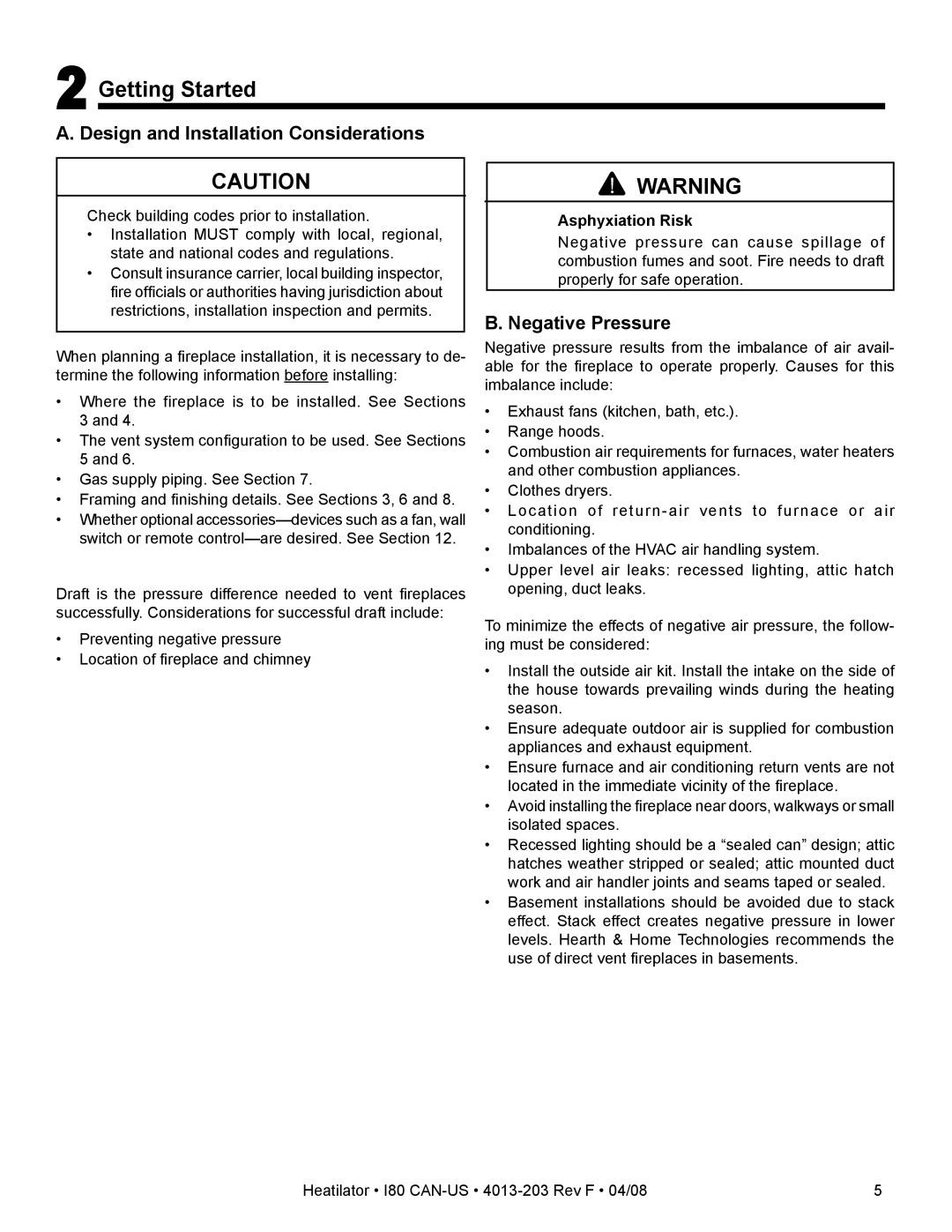I80 specifications
The Heatiator I80 is a cutting-edge fireplace insert designed to provide efficient heating while enhancing the aesthetics of any living space. Combining modern technology with elegant design, the I80 is perfect for homeowners looking to experience the warmth and ambiance of a fire without sacrificing efficiency.One of the standout features of the Heatiator I80 is its advanced heating technology. With a high-efficiency rating, this insert maximizes heat output while minimizing fuel consumption. The I80 is designed to utilize either wood or gas, offering versatility for users based on their preference and availability. The dual-fuel capability allows for easy adaptation to different conditions, providing comfort and warmth throughout the year.
The I80 incorporates a patented airflow system that improves heat circulation within the home. This innovative system distributes warm air efficiently, ensuring that every corner of the room feels cozy. Additionally, the insert comes with an adjustable fan that can be tailored to suit user preferences, allowing for customized heating levels based on the desired atmosphere.
Another impressive characteristic of the Heatiator I80 is its sleek design. The fireplace insert features a large viewing window, crafted from high-temperature tempered glass, which not only showcases the mesmerizing flames but also complements contemporary interior decor. The minimalist design is available in various finishes, enabling homeowners to choose an option that best fits their style.
Safety is a paramount concern, and the I80 comes equipped with several safety features. It includes a built-in safety shut-off mechanism that engages if the temperature rises beyond safe levels, ensuring peace of mind for users. Moreover, the unit is designed with an outer casing that remains cool to the touch, making it suitable for homes with children and pets.
Installation of the Heatiator I80 is straightforward, thanks to its flexible venting options. Whether retrofitting an existing fireplace or installing a new insert, the adaptability of the I80 accommodates various configurations, allowing for hassle-free integration into any home.
In conclusion, the Heatiator I80 stands out due to its combination of high efficiency, aesthetic appeal, and advanced safety features. With its ability to deliver warmth, ambiance, and design compatibility, it represents an exceptional option for those seeking to enhance their living space while enjoying the comfort of a modern fireplace insert.

